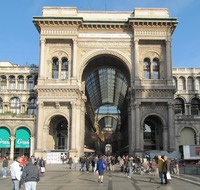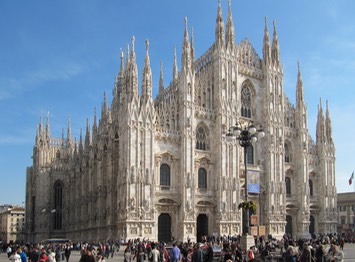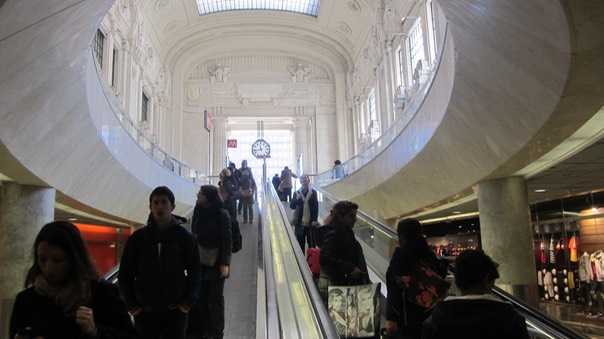
European or Italian? Industrialisation and discontinuous urban antiquity distinguishes Milan from most Italian cities. Unification and significant post war inward migration brought commercial prominence. As it became Metropolitan, traditional courtyards in "ringhiera" and noble residences, became sophisticated and less accessible but still architecturally rewarding for explorers around Piazza dei Mercanti, or Quadrilatero D'Oro. Innovative early skyscrapers (Torre Velasca and the Pirelli Tower) further reinforcing Milan's reputation as Italy’s ‘engine room’ and challenger to Florence as fashion capital.
Milan offers spectacular architectural confections. Castello Sforzesco is an enormous 14th century citadel with decorative frescos by Leonardo Da Vinci and Bramante. It gained significance in Late 19th century when the semi-circular Piazza Castello and Fontana were constructed and Via Dante cut a pedestrian route through the medieval street plan direct to the castle's gate. Torre del Filarete (1905) over this gateway is a monument to King Umberto I. and now signals the city’s civic art centre.

A few blocks west Chiesa Santa Maria delle Grazie’s humble refectory is now a precious architectural mongrel - part intensive care, - part high security vault. Preserving the inestimable value of Leonardo's "Last Supper" justifies serious technology, investment and liberal attitudes to cost control. Reassuringly 'value' trumps 'cost' in Milanese philosophy.
The Duomo also elevates QS's blood pressure. Construction took almost six centuries – five times Guadi's Sagrada Familia! Granite founds support marble carved facades. 4000 sculpted figures crown this vast temple which continues to attract hoards to its roof terraces. Candoglia white marble was donated with transportation costs by Duke Gian Galeazzo. Surely welcome savings even then for the public purse?
Commenced 1386, consecrated 1577, Napoleon ordered completion in 1805 – however work continued on the Duomo until 1965 still leaving un-carved blocks. The value of this project however cannot be over stated - particularly in respect of tourism.
Adjacent, a gigantic triumphal arch announces Galleria Vittorio Emanuele II (1861), still the key inspiration for all modern enclosed centres. In contrast to the Duomo this elaborate cast iron and stone landmark was constructed in only 12 years, and it's innovative design was quickly adapted by another architect in the almost identical Galleria Umberto (Naples), a few years later. Four tall vaulted glazed arcades intersect at a bright dome illuminating colourful mosaic flooring. Retailers vie for prominence and cafe seating spills along the mall connecting Piazza del Duomo with Teatro alla Scala. 'People watching' here is elevated far beyond mere sport.
High heeled fashionisti elegantly negotiate tram rails, vent grills and huge cobbles, dodging vintage timber tramcars or modern variants in a bustling international yet Italian streetscape. A north-american flavour scents ‘modernist’ intrusions as at Stazione Centrale. Opened in 1931 it was immediately reminiscent of NY’s Grand Central, or Union Station Washington. Sculptures and colourful mosaics bring ‘art nouveau’ to its soaring vaults. Recent refurbishment reformed ticket halls and introduced mezzanine retail below impressive high level concourses where platforms reach and view towards the Dolomites. These spectacular facilities demonstrate that here too "value still trumps costs".
